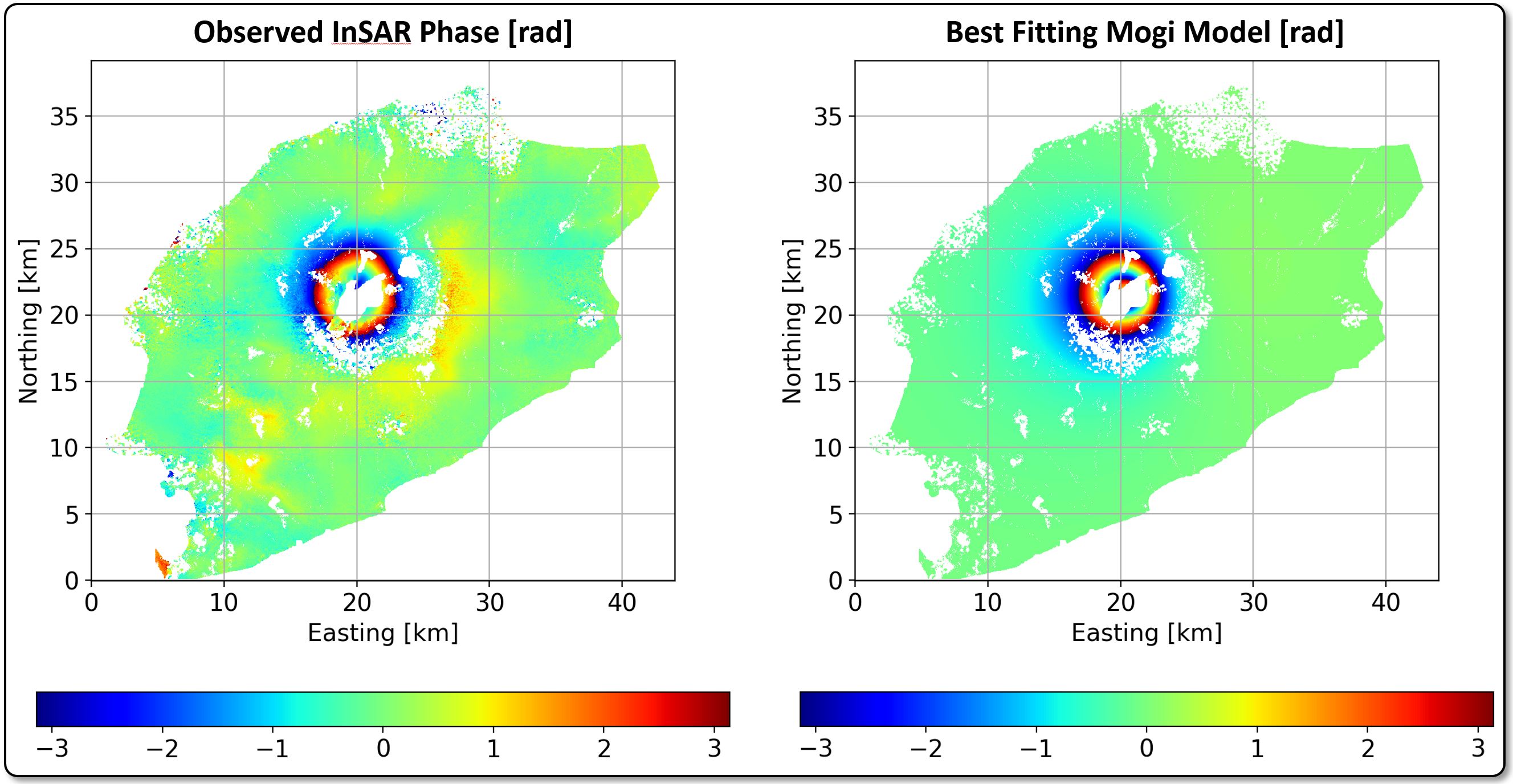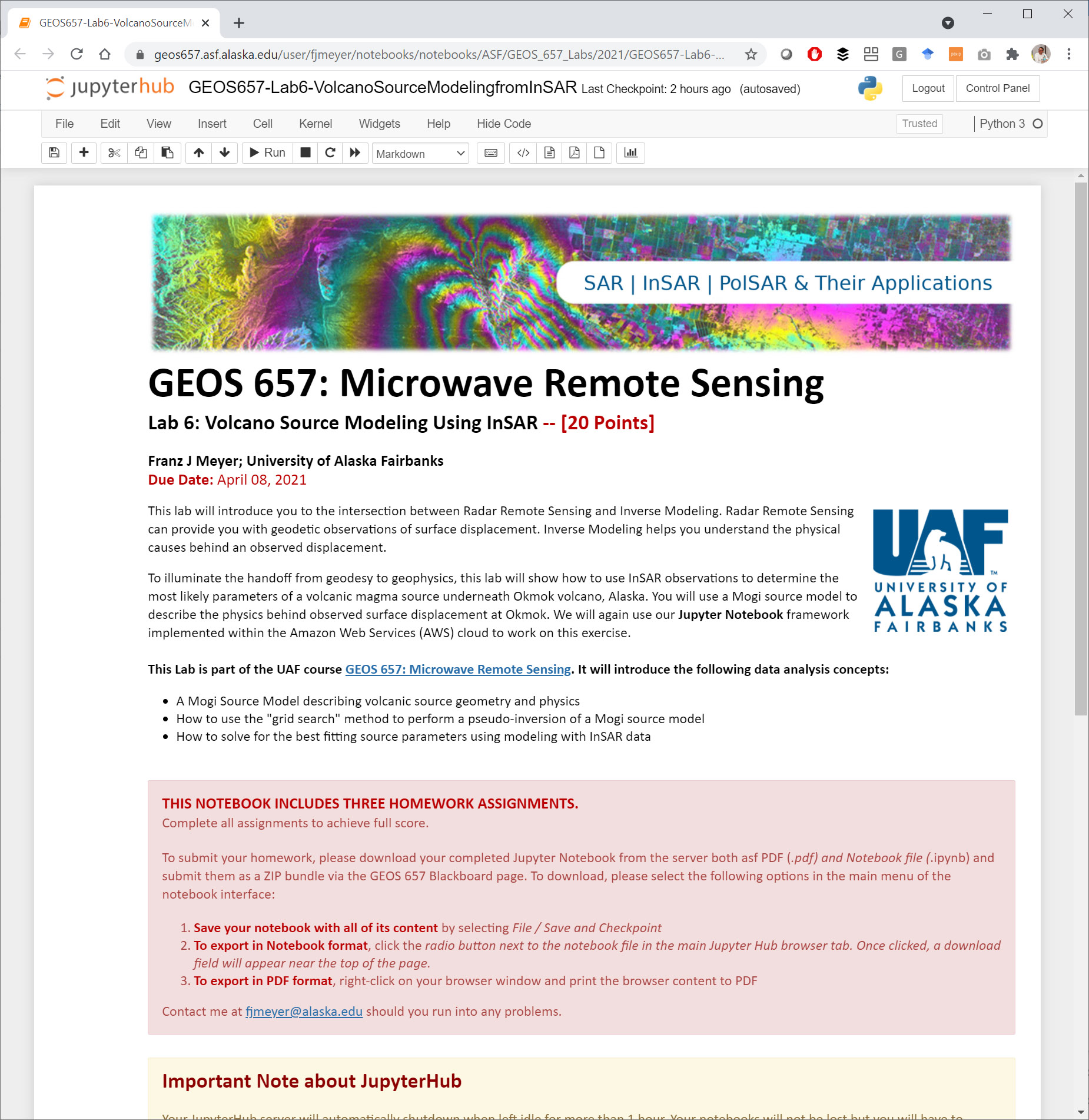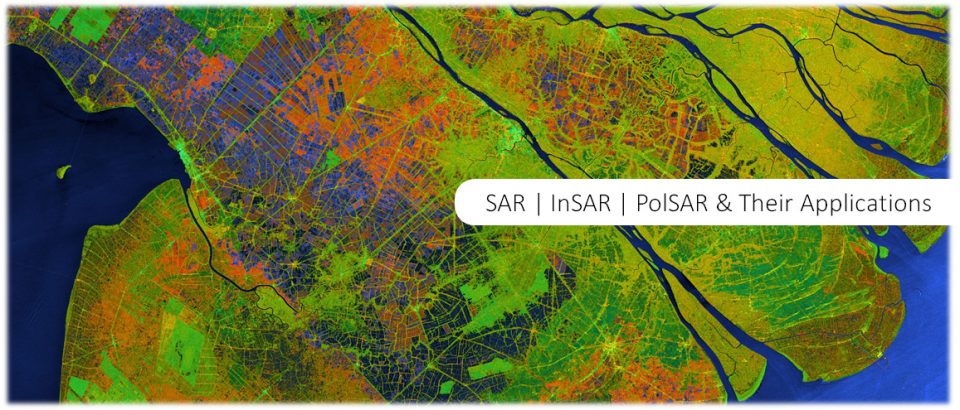 Before you Start:
Before you Start:
Please look through Lectures 11, 12, and 14 before you get started with this lab. Lectures 12 and 13 will remind you of the concepts and processing work flows of InSAR, while Lecture 14 covers the use of InSAR data in geophysical modeling. For further reading on the use of InSAR in volcano source modeling, please consult the “Volcano Source Modeling” section in the Further Reading component of this website.
Like the previous lab, this exercise is done using Jupyter Notebooks in the framework of UAF’s cloud-based OpenSARLab. The environment is accessible to you at geos657.asf.alaska.edu. The lab is implemented within the Amazon Web Services (AWS) cloud and can be used from any device with internet connection and a web browser.
Goals of this Lab:
This labs will introduce you to the intersection between Radar Remote Sensing and Inverse Modeling. Specifically, you will learn how to use InSAR observations to determine the most likely parameters of a volcanic magma source underneath Okmok volcano, Alaska. Okmok is one of the more active volcanoes in Alaska’s Aleutian Chain that had its last (known) eruption in summer of 2008. Okmok is interesting from an InSAR perspective as it inflates and deflates heavily as magma moves around in its magmatic source located roughly 2.5 km underneath the surface. To learn more about Okmok volcano and its eruptive history, please visit the very informative site of the Alaska Volcano Observatory.
We will use a pair of C-band ERS-2 SAR images acquired on Aug 18, 2000 and Jul 19, 2002 to analyze the properties of a volcanic source that was responsible for an inflation of Okmok volcano of more than 3cm near its summit. We will assume that the source can be modeled as an inflating point source (a so-called Mogi source; see Lecture 14) and will use a grid-search method for finding the source model parameters (3D source location and volume of magma influx) that best describe our InSAR-observed surface deformation.
 Completing the Lab and Homework Assignment:
Completing the Lab and Homework Assignment:
To access and complete the OpenSARLab exercise, please follow these steps:
- Access the OpenSARLab at geos657.asf.alaska.edu.
- Log in with your username and password (contact me should you need login credentials).
- Navigate to the notebooks / ASF / GEOS_657_Labs / 2023 / folder.
- Start the Juypter Notebook (GEOS657-Lab7-VolcanoSourceModelingfromInSAR.ipynb). A screenshot of the Notebook opened in your Jupyter console is shown to the right.
- Complete the notebook and the lab assignments within.
- Submit your assignments as instructed in the notebook.
Watch the 2023 Recording of this Lab:
The University of Alaska Fairbanks is an AA/EO employer and educational institution and prohibits illegal discrimination against any individual: Learn more about UA’s notice of nondiscrimination.

